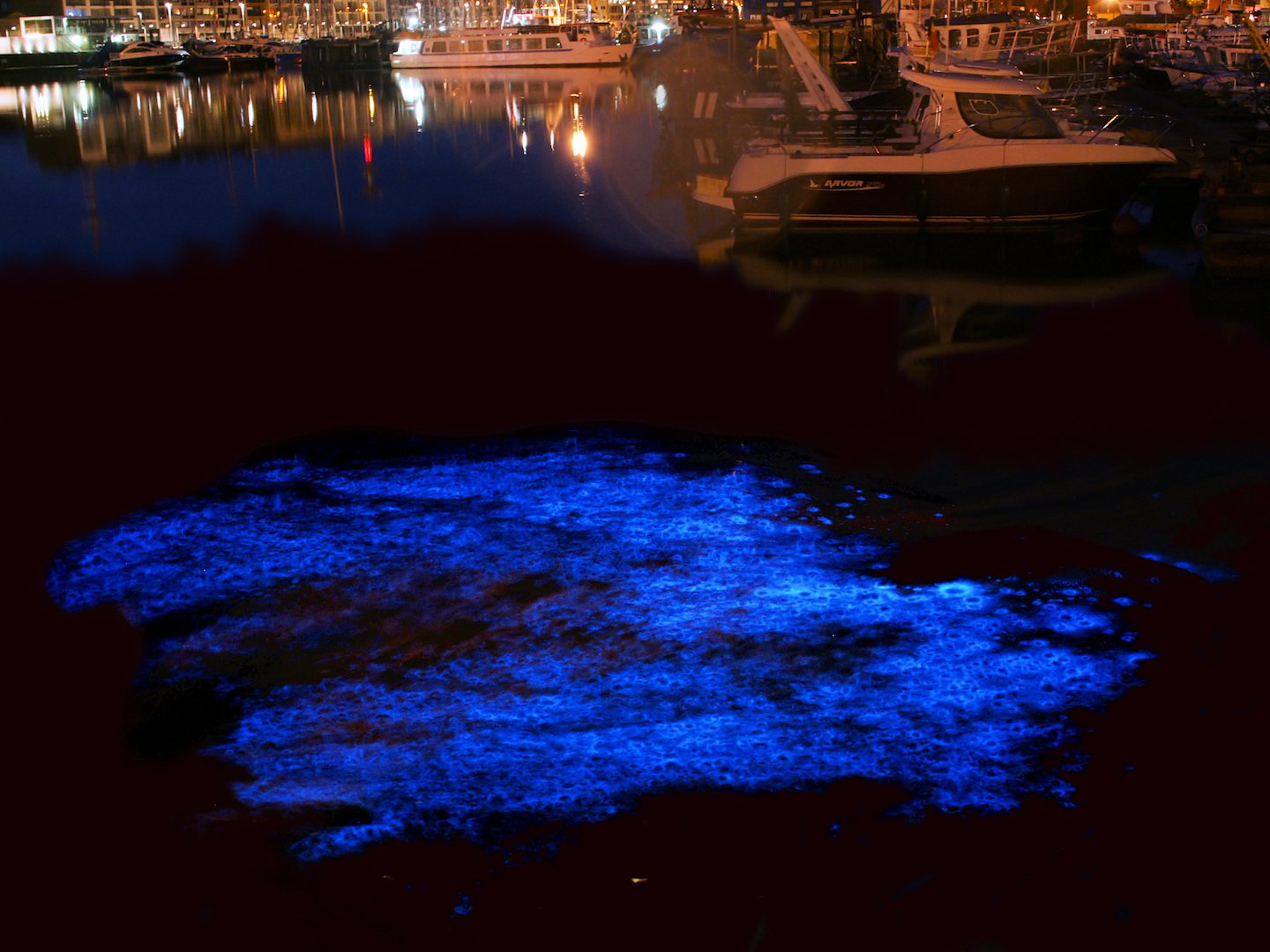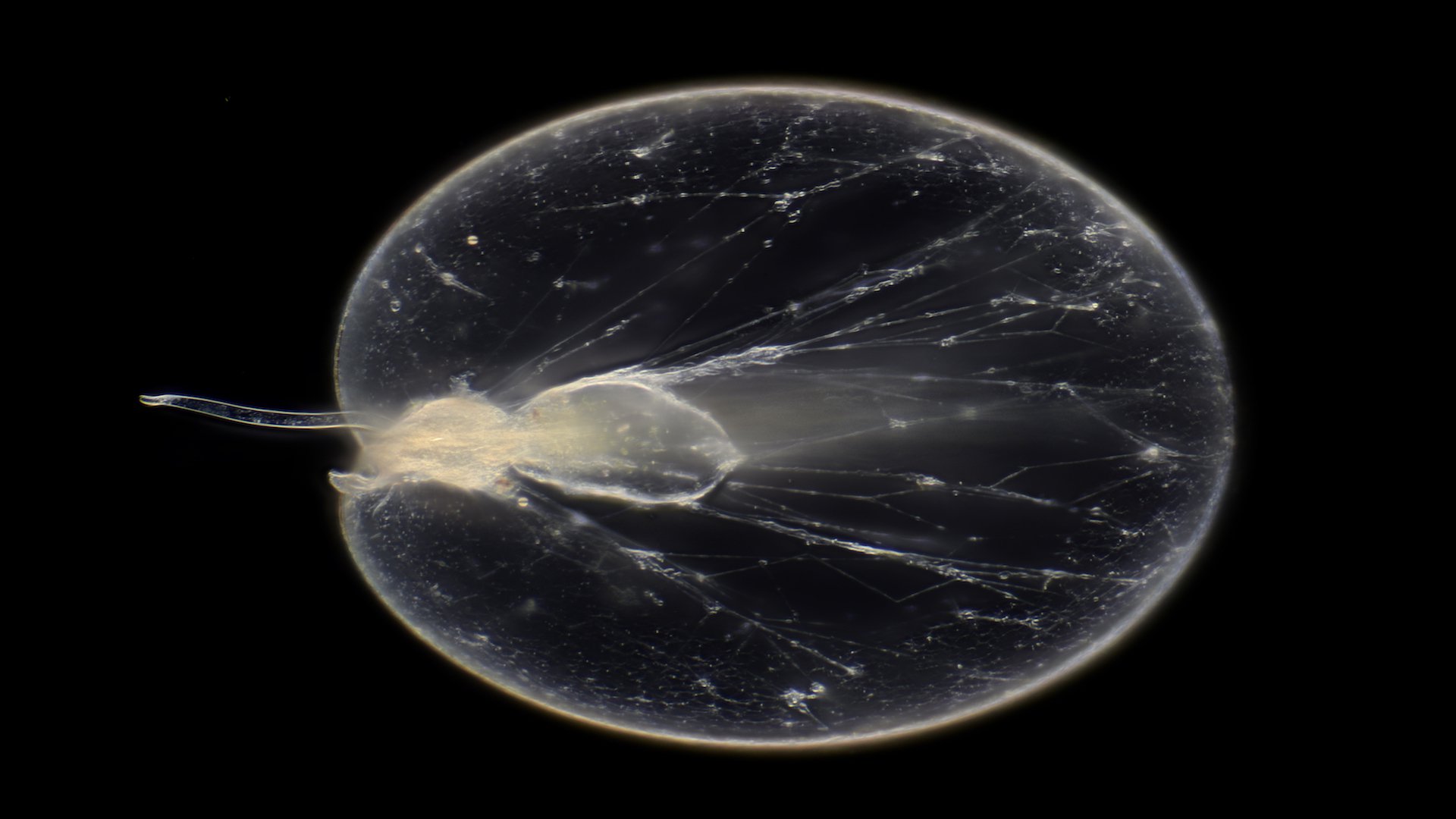On warm summer evenings, a ghostly blue glow sometimes appears in the waves off the coast, or in the wake of ships. The movement of the water causes a flashy scare reaction from micro-algae called sea sparkle (Noctiluca scintillans).
On warm summer evenings, a ghostly blue glow sometimes appears in the waves off the coast, or in the wake of ships. The movement of the water causes a flashy scare reaction from micro-algae called sea sparkle (Noctiluca scintillans).
Balloon with tentacle
Sea sparkle (Noctiluca scintillans) looks a bit like a balloon with a tentacle. This microbe is about one to two millimeters in size. It is a single-celled dinoflagellate (an alga with a flagellum or tentacle) and belongs to the microalgae. Unlike most algae, sea sparkle does not use sunlight to make food (photosynthesis). This is one of the reasons why scientists are not quite sure whether sea sparkles are more like animals or plants. It has certain characteristics of a plant, but it must also eat other organisms to stay alive. So it is not a real microalgae, but also not a real animal.
Light in the waves
Sea sparkle gets its name from the fact that this microbe can produce light. This natural light is called bioluminescence. Bioluminescence is the production of light by living organisms. The light results from a reaction in which the pigment luciferin is oxidized under the influence of the enzyme luciferase. Oxygen, which is toxic to these micro-organisms, is broken down and cold light is released. Sea sparkle uses this light as a diversionary maneuver. A bright flash confuses predators and puts them on the wrong track. Not only does this have a blinding effect on the predator, but it also attracts larger predators that scare away the original threat. You can also see the luminous sea sparkle in the Netherlands. Especially on a warm summer’s eve. Movement, such as wave action, activates the light response and creates a ghostly blue glow in the waves during a late beach walk.

Sea sparkle provides light by means of bioluminescence.
Red tide
To survive, sea sparkle eats food particles that float around in the water, such as other microalgae and bacteria. In addition to taking food into his cell, he also uses his sticky tentacle to catch food. Noctiluca is transparent, making it easy to see what he has eaten. One of its food sources is red algae. The red pigment of its prey is clearly visible inside the sea sparkle's cell. In sunny weather or with a high concentration of nutrients, blooms of these red algae sometimes occurs. Due to the increase in the amount of prey, this algal bloom often results in a sea sparkle bloom. The enormous amount of sea sparkles then turns the water reddish brown. This phenomenon is also called a "red tide" and can sometimes be seen off our coast. In Micropia you can see these luminous microbes with your own eyes all year round. Plan your visit .

